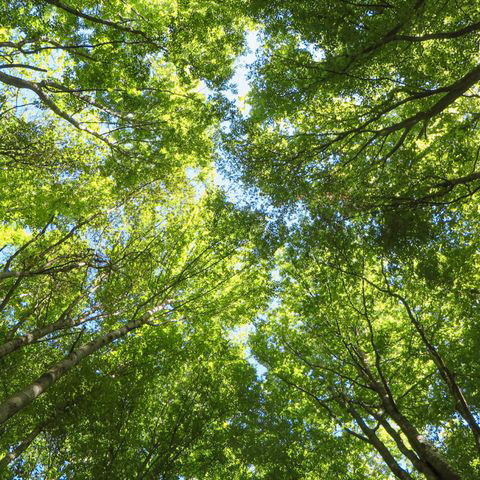
Forest Condition Report 2023: The health status of Berlin’s forest trees has improved somewhat, but is still at a poor level
A third of the forest trees show significant damage. The proportion of healthy trees has increased slightly.
Despite the slightly higher rainfall, the health of Berlin’s forest trees will remain critical in 2023. Despite a slight improvement, this year it is at a similarly poor level as in the years 2019 to 2021.
Furthermore, around a third (30 percent) of the forest trees in the country, mostly pines and oaks, show significant damage (previous year: 40 percent). The proportion of healthy trees has increased slightly: six percent of the trees show no visible damage. A slight improvement after last year’s all-time low (four percent).
The main tree species are affected differently. The condition of the most common Berlin forest tree, pine, has improved significantly. Only 14 percent are significantly damaged (2022: 33 percent). The proportion of pine trees without visible crown damage rose to six percent (2022: two percent). This can be the start of regeneration. However, this takes several years – even under favorable weather conditions.
The vitality of the oak trees continues to decline for the third year in a row. 60 percent show significant damage (2022: 49 percent). In this year’s forest condition survey, no oak tree was recorded without damage (2022: five percent). This is a new low! The condition of the English oaks in particular has deteriorated significantly.
The death rate has reached a new high. The value of 1.56 percent (2022: 0.41 percent) exceeds the previous highs from 2003 and 2020 and is a result of the many years in which annual precipitation remained below the long-term average. The value recently fell at Kiefer, now it has risen to 0.52 percent (2022: 0.17 percent). The value of oak rose sharply to a new record value of 3.09 percent (2022: 0.95 percent).
Manja Schreiner, Senator for Mobility, Transport, Climate Protection and the Environment: “The vitality of Berlin’s forest trees continues to suffer greatly from the effects of the climate crisis. Intact and climate-stable forests are an indispensable element of the sustainable development of the city of Berlin. As cooling and balancing landscape elements, they are of outstanding importance for the air hygiene situation in the city as well as for groundwater recharge and as a natural CO2 store. This means that Berlin’s forests play a central role in climate adaptation. Climate protection is forest protection! That is why we are working on effective climate protection measures to minimize the burden and risks on the forests. We are also planting around 500,000 deciduous trees this year because it is our responsibility to preserve the Berlin Forest for ourselves and our children.”
The figures from the forest condition report also show this year: the climatic conditions are changing too quickly for our forest ecosystems to adapt naturally. The Berlin forests are therefore consistently developing climate-stable mixed deciduous forests. In the fall and winter of 2022, a total of around 283,000 deciduous trees were planted over an area of 100 hectares. Around 500,000 deciduous trees are planned to be planted for this planting period. These are mainly sessile oaks, beeches, hornbeams, winter linden trees, elms and maples. In addition to the natural care and development of the forests according to the criteria of the Forest Stewardship Council (FSC) and the Naturland Association, this is the most important measure for stabilizing and preserving Berlin’s recreational forest and its water balance.
The Berlin forestry efforts to convert forests are showing initial success. The proportion of deciduous trees and the biodiversity in the forests are continually increasing. The efforts and concepts must be continued and intensified for further stabilization.
The 2023 forest condition report download (German only):
www.berlin.de/forsten/waldschutz/waldstaatsberichten/
Waldzustandsbericht 2023: Gesundheitszustand der Berliner Waldbäume hat sich etwas verbessert, liegt aber weiterhin auf schlechtem Niveau
Ein Drittel der Waldbäume zeigen deutliche Schäden. Der Anteil der gesunden Bäume ist leicht gestiegen.
Trotz der etwas höheren Niederschläge bleibt der Gesundheitszustand der Berliner Waldbäume im Jahr 2023 kritisch. Trotz leichter Verbesserung liegt er in diesem Jahr auf ähnlich schlechtem Niveau wie in den Jahren 2019 bis 2021.
Weiterhin zeigt ein rund Drittel (30 Prozent) der Waldbäume im Land, zumeist Kiefern und Eichen, deutliche Schäden (Vorjahr: 40 Prozent). Der Anteil der gesunden Bäume ist leicht gestiegen: Sechs Prozent der Bäume weisen keine sichtbaren Schäden auf. Eine leichte Verbesserung nach dem Allzeittief im vergangenen Jahr (vier Prozent).
Die Hauptbaumarten sind unterschiedlich betroffen. Der Zustand des häufigsten Berliner Waldbaumes, Kiefer, hat sich deutlich verbessert. Nur noch 14 Prozent sind deutlich geschädigt (2022: 33 Prozent). Der Anteil an Kiefern ohne sichtbare Kronenschäden stieg auf sechs Prozent (2022: zwei Prozent). Dies kann der Beginn einer Regeneration sein. Diese dauert allerdings – auch unter günstigen Witterungsbedingungen – mehrere Jahre.
Die Vitalität der Eichen nimmt im dritten Jahr in Folge weiter ab. 60 Prozent zeigen deutliche Schäden (2022: 49 Prozent). In der diesjährigen Waldzustandserhebung konnte keine Eiche ohne Schäden aufgenommen werden (2022: fünf Prozent). Das ist ein neuer Tiefstwert! Insbesondere der Zustand der Stiel-Eichen hat sich deutlich verschlechtert.
Die Absterberate hat einen neuen Höchstwert erreicht. Der Wert 1,56 Prozent (2022: 0,41 Prozent) übertrifft die bisherigen Höchstwerte aus den Jahren 2003 und 2020 und ist ein Ergebnis der vielen Jahre in denen der Jahresniederschlag unter dem langjährigen Mittel blieb. Zuletzt sank der Wert bei der Kiefer, jetzt steigt er auf 0,52 Prozent (2022: 0,17 Prozent). Der Wert bei der Eiche steigt stark auf den neuen Rekordwert 3,09 Prozent (2022: 0,95 Prozent).
Der Waldzustandsbericht 2023 als Download:

